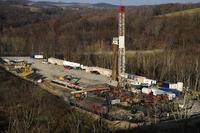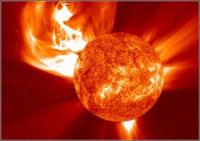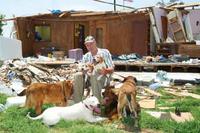-
Groundbreaking tests to offer better understanding of post-earthquake fires
Post-earthquake fires are a well-known and serious hazard, but very little is known about the performance of fire protection systems in earthquakes; groundbreaking tests to be conducted next week are aimed at better understanding of the effects of earthquakes on building systems designed to suppress or prevent the spread of fires
-
-
Tornado season survival tips for employers
Dozens of tornadoes have already ravaged the Midwest and more recently, Texas, indicating that the tornado season is moving into high gear; employers should review their business continuity and disaster recovery (BC/DR) plans to keep employees safe and operations running should a devastating twister strike
-
-
Seismic safety worries about South Carolina nuclear fuel facility
The worries about the seismic safety of nuclear energy-related facilities, worries which have only grown since the March 2011 Fukushima disaster, extend not only to nuclear power reactor, but to other facilities as well; the most recent example is a Westinghouse facility outside Columbia, South Carolina, one of only three facilities in the United States which make nuclear fuel for commercial reactors
-
-
Improve tsunami warnings by placing GPS on commercial ships
Researchers find that commercial ships travel across most of the globe and could provide better warnings for potentially deadly tsunamis; this finding came as a surprise because tsunamis have such small amplitudes in the deep water, in contrast to their size when they reach the coastline, that it seemed unlikely that the tsunami would be detected using GPS unless the ship was very close to the source and the tsunami was very big
-
-
U.S. severe weather insurance losses in April nearly $1 billion
A series of severe weather events across central and southern sections of the United States caused upward of $1 billion in insured losses. Economic losses were even higher during the month of April
-
-
New micro helicopters for search and rescue missions
New micro helicopters have a diameter of about fifty centimeters, weigh only 1,500 grams; they do not rquire GPS or remote control to navigate; they are designed to maneuver in tight or even enclosed spaces, and to detect and fly around any obstacle; possible uses could include protection or rescue missions, and they are ideal for flying over disaster areas and giving a picture of the situation from the air or locating victims
-
-
NASA to test new system of rapid earthquake analysis
The National Aeronautics and Space Administration (NASA) is prepared to begin testing this year a new system rapidly and accurately to measure the location and intensity of large earthquakes; the new system combines the traditional network of seismic monitors already in place with GPS technology
-
-
Safe fracking requires distance from sensitive rock strata
Fracking — the process which releases natural gas and oil from shale rock strata – is becoming more and more popular because it promises access to new, abundant sources of energy; the process of fracking, however, has been associated with increase in the frequency of earthquakes and contamination of drinking water; scientists examine thousands of fracking operations in the United States, Europe, and Africa, and conclude that in order to minimize water contamination and earthquakes, there should be a minimum distance of at least 0.6 km between a fracking operation and sensitive rock strata
-
-
Designing stormwater systems for the future
Researchers study how climate change is affecting rainfall and weather patterns throughout Kansas to help with future adaptation and mitigation strategies; the researchers are updating rainfall distribution data to ensure current stormwater management systems can handle future weather changes
-
-
Increased U.S earthquakes may be caused by fracking

From 1970 to 2000 the number of magnitude 3.0 or greater temblors in the U.S. mid-continent averaged twenty-one annually; by 2011 the number of such quakes had increased to 134; a new study by the U.S. Geological Survey links the increase of seismic activity to the increase in the use of hydraulic fracturing, or fracking
-
-
Solar storms and infrastructure vulnerabilities

Space weather, and in particular coronal mass ejections, can cause huge disruption to many highly technological systems on Earth; experts say that vulnerable industries, such as power grids and airlines, should gather more information on space weather in order to make more informed decisions about how to deal with future solar storms
-
-
San Francisco earthquake planners developing pet-disaster response

San Francisco is preparing for the Big One in more ways than one: the latest addition to the city’s disaster preparedness plans is a legion of pet disaster responders, trained by city officials to rescue pet dogs, cats, rodents, birds, and reptiles in the event of a disaster, and transport them to one of 125 temporary shelters
-
-
California quake test shows promise of new building code

Researchers place a model hospital on a shake table to assess the structure’s ability to withstand earthquake; in accordance with California latest building code, base isolators, which are rubber bearings intended to absorb the shock of the motion, were installed underneath the structure; the hospital passed the 6.7-magnitude and 8.8-magnitude tests with flying colors
-
-
Industrial, materials industry facing risks on global scale
The struggling global economy and recent disasters, including the Thailand floods and Japan earthquake and tsunami, have forced the global industrial and materials industry to change the way it views and prioritizes resources for risk response
-
-
Direct drinking water recycling could prevent floods
The use of a more streamlined process to recycle wastewater could have saved Brisbane from severe flooding in 2011 and mitigated recent flood risks in NSW, a leading water expert says
-
More headlines
The long view
The Surprising Reasons Floods and Other Disasters Are Deadlier at Night
It’s not just that it’s dark and people are asleep. Urban sprawl, confirmation bias, and other factors can play a role.
Why Flash Flood Warnings Will Continue to Go Unheeded
Experts say local education and community support are key to conveying risk.
